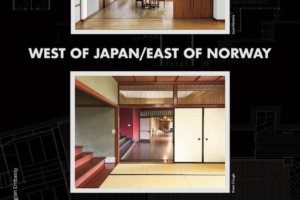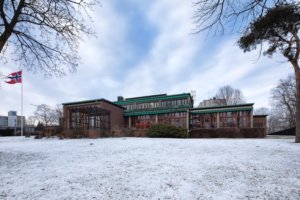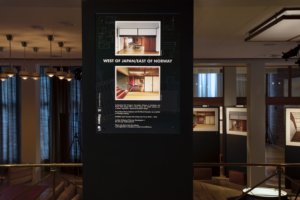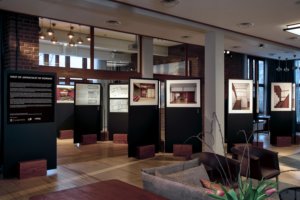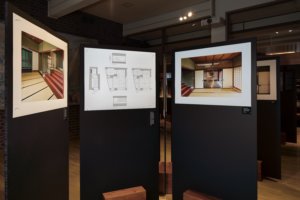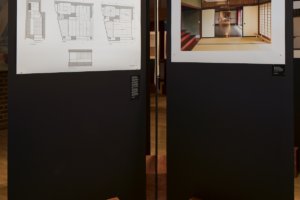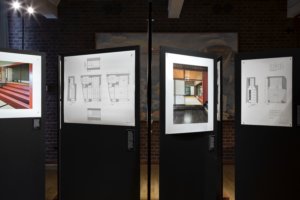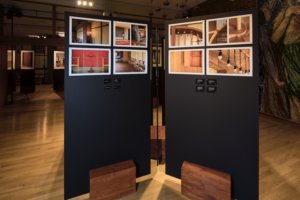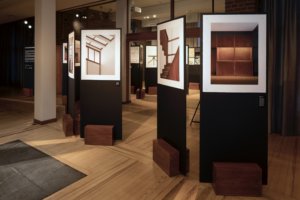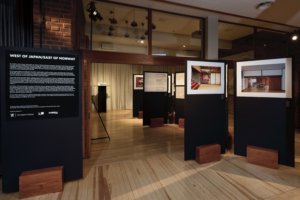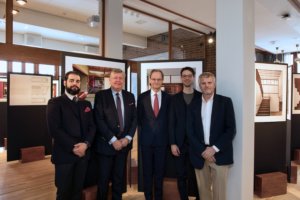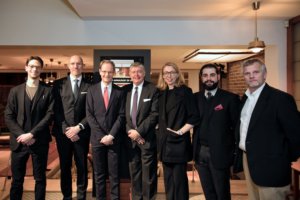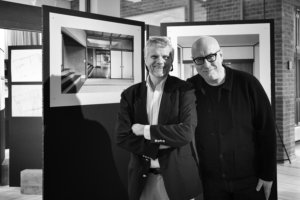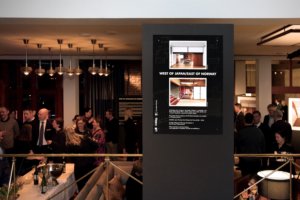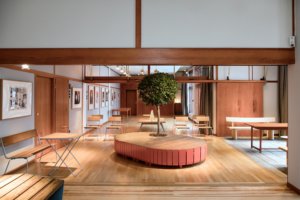With grateful thanks to all involved at the Norwegian Embassy for their hard work and dedication to this exhibit, and thank you to Marco Capitanio, Luca Ferrario and Ole Rikard Høisæther.
From the desk of Marco Capitanio…
WEST OF JAPAN/EAST OF NORWAY
The exhibition „West of Japan / East of Norway“ attempts a daring architectural comparison. It juxtaposes for the first time Knut Knutsen’s Norwegian Embassy in Stockholm and Bruno Taut’s Hyuga Villa in Atami, Japan. Knut Knutsen (Norwegian architect, 1903-1969) took inspiration from Japanese architecture and Frank Lloyd Wright – a connoisseur of Japan himself – for the design of his embassy building in Stockholm, realized between 1948 and 1952. We know this from his statements, documents and drawing references. Architectural historians have been emphasizing it for decades.
The Norwegian Embassy, brought back to its pristine condition after a careful renovation, comes to host photographs and drawings of Hyuga Villa, a likely source of inspiration to Knutsen, built in 1936. Thanks to a new photographic interpretation of the embassy building, the exhibit clarifies how a certain “Japanness” seeped into Knutsen’s design, presumably borrowing from Hyuga Villa, from Taut’s books on Japanese architecture, and from Katsura Imperial Villa in Kyoto (17th century).
Hyuga Villa and the Norwegian Embassy embody a personal reflection on Japanese architecture, mediated through European sensibilities. Bruno Taut (German architect, 1880-1938) fled from the growing Nazi movement in the mid 1930s in central Europe. His stay in Japan culminated in Hyuga Villa (Kyū Hyūga Bettei). Taut’s project was first presented in the international French architectural magazine “L’architecture d’aujourdhui” in 1937, with a text written by the architect himself, paired with plans and photographs. The project, a crosscultural breeding between European and local architectural language, was rediscovered in its full width thanks to exhibitions and symposia in 2016-17.
Knut Knutsen owned several books on Japanese architecture. One was “Japanische Architekur”, 1936, by Tetsuro Yoshida (Taut’s friend and collaborator), still in the family’s possession. It is more than likely that he also knew (or possessed) Taut’s books on the same subject. Knutsen was commissioned, together with the Norwegian architect Arne Korsmo, to design the Norwegian pavilion for the World Exhibition in Paris in 1937. This was one of the reasons why he was a subscriber to “L’architecture d’aujourdhui” in the years before and after the exhibition. The presentation of Hyuga Villa in the 1937 magazine must have been of special importance to Knutsen, based on his general interest on Japanese-European relationships.
Taut was able to spend three years in the East, before settling in Istanbul, at the crossroad of oriental and western cultures. It is now our intention to show how his legacy travelled to the North thanks to Knutsen, as his readings must have brought inspiration all the way to the Norwegian Embassy in Stockholm. Or so it seems.
Curated by Marco Capitanio and Ole Rikard Høisæther.
Photographs of the Norwegian Embassy by Luca Ferrario, photographs of Hyuga Villa by Dave Clough.
